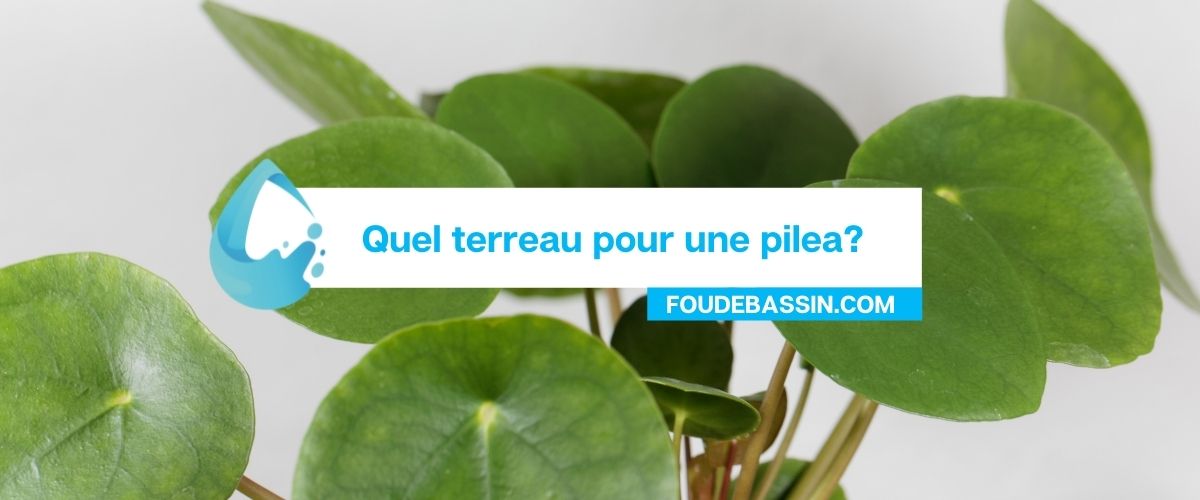Retrouvez ici les indispensables et meilleures ventes pour nos propriétaires de bassin.
Retrouvez ici les indispensables et meilleures ventes pour nos propriétaires de bassin.

What soil for a pilea (Pilea peperomioides)?
The Pilea Peperomioides plant is a very original variety that comes to us from southwestern China. Its green, round leaves fit perfectly into contemporary and zen interiors. Moreover, this plant is nicknamed “the lucky tree” because its leaves look like coins... So, to find out what soil to use for a Pilea and how to maintain it, read on!
This houseplant is perennial and succulent. She does not survive below 10 degrees and loves light. Therefore, it is possible to take it out on the balcony or terrace on sunny days. It supports the sun provided it is not typing. Thus, it is preferable not to expose it to the south.
In addition, this plant tends to twist to capture as much light as possible on all of its leaves. To keep it compact, do not hesitate to turn it a quarter turn from time to time.
When watering the Pilea Peperomioides, be careful not to pour too much water all at once. It will not tolerate excess humidity. So be sure to water it regularly, but not abundantly.
Good to know: this plant adapts just as well to a dry interior like an office as to a humid interior like a bathroom.
To choose the substrate for your Pilea Peperomioides, we advise you to make a mixture of potting soil for indoor plants and sand or pozzolana. You can also mix ⅓ potting soil for indoor plants, ⅓ sand or pozzolan and ⅓ garden soil. Either way, the result should be light and draining.
Otherwise, you can also buy a special substrate for succulents. Thus, you will not need to carry out the dosage yourself.
Finally, the Pilea does not need to feed, but you can give it a small amount of fertilizer from time to time, either for green plants or for succulents.
When it comes to frequency, we recommend repotting a Pilea plant every year or two. Take the opportunity to remove the rejections it makes at the base.
To prepare the clay pot, start by placing a small filter at the level of the hole. This will prevent the clay balls from falling into the saucer. Then place two or three centimeters of clay balls in the bottom. Then, add a drainage felt so that the substrate does not mix with the clay pebbles. Finally, add a layer of substrate.
Gently remove the Pilea from its original pot. Then, clean it and remove as much of the original substrate as possible. Once only its roots are left, position your plant in its new pot.
Last step to repot your Pilea: add substrate so that your plant is at the right height. Then, tamp gradually to fill the air holes. Do not hesitate to put a lot of soil, especially if it is a special substrate for succulents. This will tend to settle over time.
Need more tips on becoming a budding gardener? So, browse the other articles of our blog!
Aquipond Greenstab - Natural treatment against pond algae It is a natural product that helps limit algae at any time. It also has a prevent...
View full detailsReduces the layer of silt in the pond by at least 40% Easy to use with less impact on biodiversity Prevents fermentation, bad odors. pH ...
View full detailsOrganic dye to block plant growth by limiting photosynthesis ORGANIC PRODUCT NON TOXIC TO HUMANS (DIVING) AND FISH. 100% NATURAL AND BIODE...
View full detailsThe positive effects of barley straw have been known to water enthusiasts for a long time. But currently barley straw is difficult to find and i...
View full detailsReduces at least 40% of the layer of silt in the pond Easy to use with less impact on biodiversity Prevents fermentation, bad odors. ...
View full details
Leave a comment